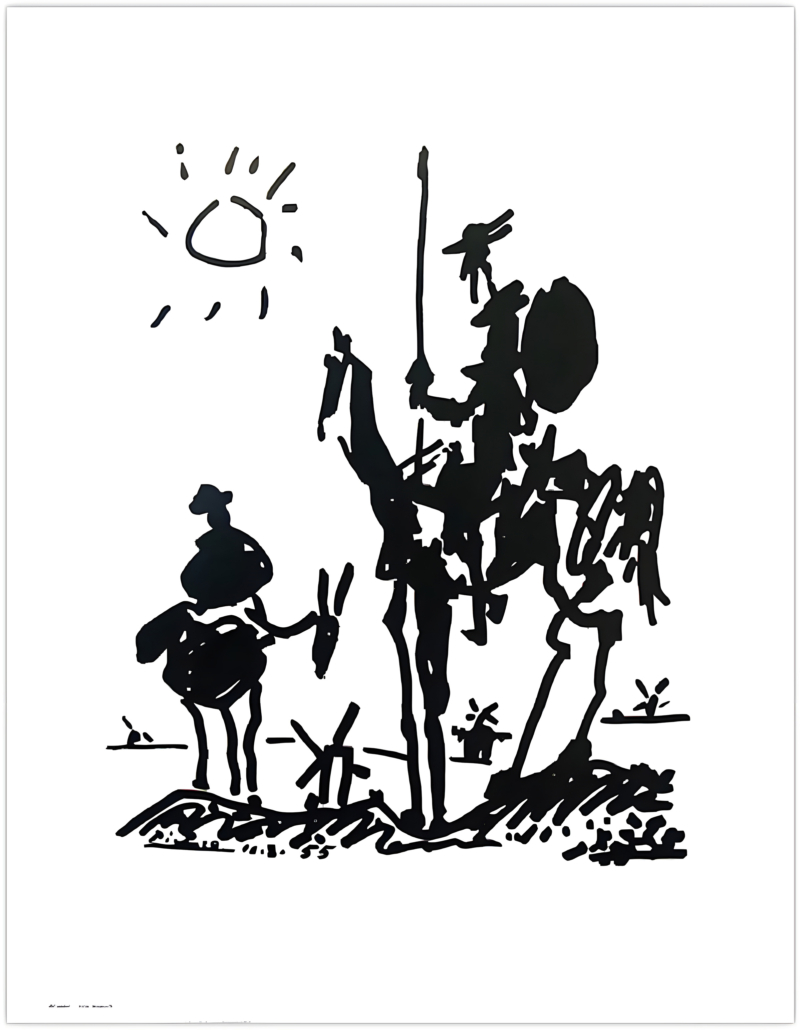This is an absolute miracle of simplicity and economy, from an artist who said he could “draw like Raphael” from a young age, “but it took me years to learn to paint like a child”. With a few rudimentary strokes, and just two colours, we can see it all: the heat of the sun of La Mancha, the rough earth they spring from, and the dumpy Sancho Panza gazing up patiently at his master’s crooked nobility. The minimal lines that constitute Quijote’s face somehow reveal an aquiline nose and wiry beard, and Rocinante, dwarfing the four windmills, is drawn so as to be only half there. This pic also represents a bridge across both time and space: a love letter from Picasso to a far-distant Spain of knights errant, to the timeless genius of Cervantes himself, as well as to the country he’d left in his youth, unrecognisable by the time he came to make this. Finally, in the way it radiates sympathy, energy, and movement from such limited means, it represents the genius of an artist who claimed that his father – having taught him to draw – saw Picasso’s work aged 13, handed the youngster his brushes, and never painted again.

 Tomorrow is Never – Kay Sage
Tomorrow is Never – Kay Sage